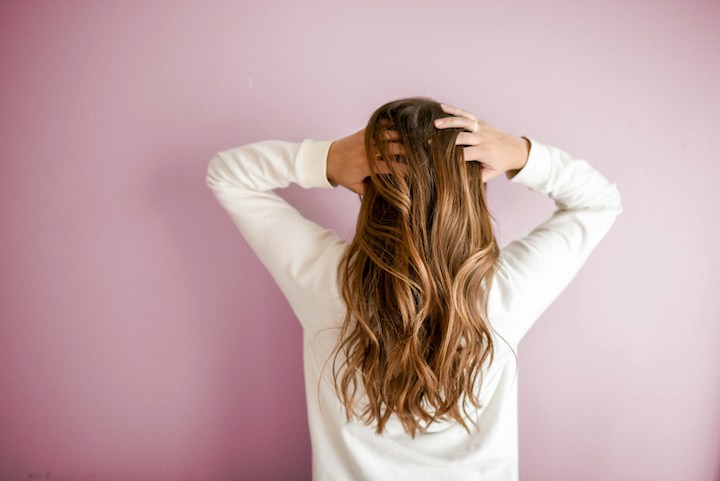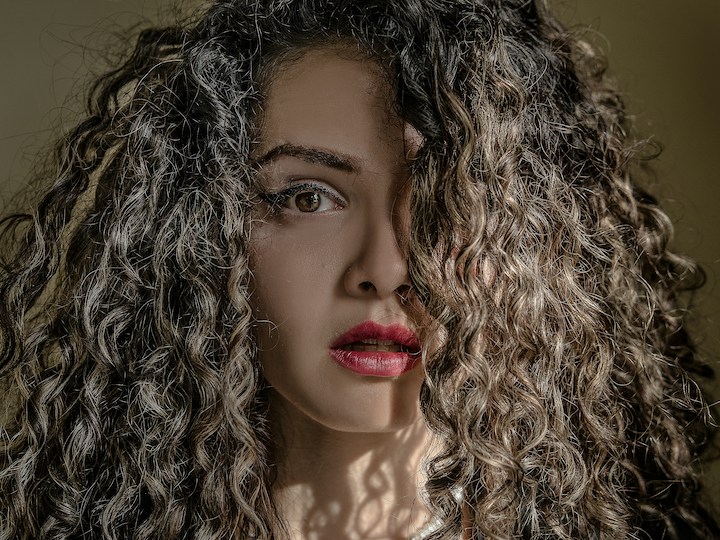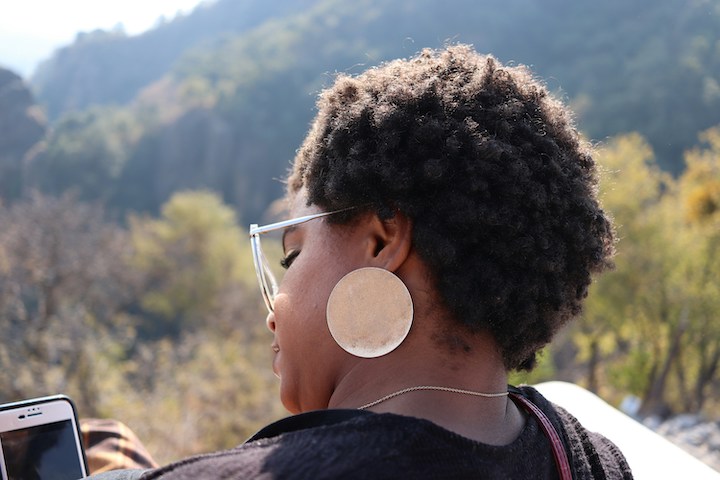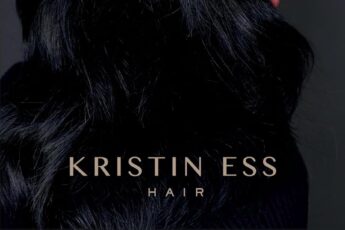I used to think hair was just… hair. You wash it, dry it, maybe style it, and that’s it. But then I started wondering why some products made my hair feel amazing while others left it flat or frizzy. Turns out, it wasn’t the shampoo’s fault — it was my hair texture.
If you’ve ever looked at your hair and thought, Why does it act so differently from my friend’s?, you’re not alone. We all have our own hair texture types, and once you figure out yours, everything about caring for it starts making sense.
Today, I want to walk you through what hair texture types really mean, how to identify yours, and how to take care of it without losing your mind (or your curls). Let’s make this simple and personal, like two friends talking about the daily love-hate relationship we have with our hair.
Table of Contents
Key Takeaways
- Your hair texture is the natural pattern of your strands — not their thickness.
- There are four main types: straight, wavy, curly, and coily.
- Knowing your texture helps you pick the right care routine.
- Every texture has beauty — it just needs the right attention.
- Learn your texture, embrace it, and let it shine its own way.
What Hair Texture Really Means
When people say “hair texture,” they often mean thickness — like fine, medium, or coarse strands. But that’s not the full picture. Hair texture actually refers to the natural shape or pattern your hair makes when it dries on its own.
You can have straight, wavy, curly, or coily hair, and each one behaves differently. Think of texture as your hair’s personality — some are calm, some wild, some unpredictable.
Your texture can even shift over time. I remember after a stressful year and a big haircut, my hair stopped being straight and started forming waves I’d never seen before. I thought something was wrong at first, but nope — my hair was just changing, like it was finding a new version of itself.
Have you ever noticed your hair acting different after coloring, pregnancy, or stress? That’s texture in motion. It’s fascinating how our hair quietly reflects what’s happening inside and around us.
The Four Main Hair Texture Types
Alright, let’s talk about the main texture types. You’ve probably heard of the number system — Type 1 through Type 4. But I’ll keep it easy to understand and skip the technical talk.
Type 1: Straight Hair

Straight hair lies flat from root to tip, which means it reflects light beautifully. That’s why it often looks shiny, even when you haven’t done much to it.
The downside? Oil travels down straight strands quickly, so it can look greasy faster than you’d like. I remember back in school, my best friend had hair like glass — shiny and sleek — but she used to joke about needing dry shampoo almost every morning.
If this sounds like you, go easy on the heavy oils or butters. Use lightweight shampoos, and maybe wash a bit more often. Straight hair loves balance — not too much moisture, not too much product.
Type 2: Wavy Hair

Ah, wavy hair. The middle ground between straight and curly. It’s got that natural bend that looks effortlessly pretty — unless humidity joins the party.
Wavy hair has this gorgeous “S” shape that can look soft or wild depending on how you treat it. The funny thing is, I used to think my hair was straight because I always blow-dried it. One day, I let it air dry after a lazy Sunday shower, and there they were — little waves hiding in plain sight.
If you’ve got wavy hair, light styling creams or mousses can help define those curves without weighing them down. Try scrunching your hair as it dries; it brings out your waves like magic.
Type 3: Curly Hair

Curly hair has its own rhythm — spirals, ringlets, or corkscrews that bounce and move in their own way. It’s lively and full of character, but also more prone to dryness because natural oils can’t travel easily down the curves.
I’ll be honest, curly hair needs love — not control. You can’t force it into shape; you guide it gently. Think sulfate-free cleansers, deep conditioners, and products that hydrate without flattening those curls.
And humidity? It’s both friend and foe. It gives curls life but can also make them puff up like a cloud. The trick is learning what your hair loves and letting it do its thing.
Type 4: Coily or Kinky Hair

Now, coily hair — this one is a masterpiece. Tight curls, soft coils, and endless versatility. It’s often misunderstood, labeled “difficult,” when it’s actually strong and full of personality.
Coily hair can shrink up to 75% of its length, which surprises a lot of people. It’s why you might feel like your hair never grows, even though it’s thriving. It just coils in tighter loops.
The key is moisture. Rich creams, oils, and protective styles that help keep that moisture in. If you’ve ever felt like your hair breaks too easily, you probably just need more hydration, not more product.
And please don’t forget — coily hair is beautiful. Every twist and turn tells its own story.
Also Read: Hair Shedding vs Breakage: The Truth About Why Your Hair is Falling Out
How to Identify Your Hair Texture
If you’re unsure what texture you have, here’s a little experiment I love to do:
- Wash your hair with a gentle shampoo.
- Don’t use conditioner or styling products.
- Let it air dry completely — no heat, no combing.
- Look in the mirror.
- Is it pin-straight? Does it bend? Curl? Coil? That’s your texture.
The first time I did this, I couldn’t believe how wavy my “straight” hair actually was. Years of blow-drying had completely hidden its natural pattern.
If you want to take it further, feel your strands. Are they fine and slippery, or thick and coarse? This helps you understand how your hair reacts to moisture and products.
The goal isn’t to fit perfectly into a box. It’s to learn what your hair likes, so you can care for it instead of fighting against it.
Why Knowing Your Hair Texture Matters
Once you figure out your texture, it’s like unlocking a little secret about yourself. Suddenly, all those confusing hair product aisles start to make sense.
Here’s what knowing your hair texture helps you do:
- Choose the right products. Lightweight or rich — you’ll know what works.
- Avoid common mistakes. You’ll stop over-moisturizing or stripping your hair.
- Simplify your routine. You won’t buy random products “just to try.”
- Protect your hair. You’ll learn how to wash, style, and dry it without stress.
When I finally started buying for my texture, my hair felt healthier within weeks. No more fighting tangles or battling frizz. I wasn’t doing more — I was just doing what worked for me.
Hair Care Tips for Each Texture Type
Let’s keep this part easy and real. No fancy jargon — just what works.
For Straight Hair:
- Use lightweight shampoos and conditioners.
- Avoid too many oils.
- Rinse thoroughly — buildup shows fast on straight strands.
- Try dry shampoo between washes.
For Wavy Hair:
- Use a light conditioner to keep the bounce.
- Scrunch your hair while drying to boost waves.
- Avoid brushing once it’s dry — finger comb instead.
- Embrace a little frizz; it gives waves life.
For Curly Hair:
- Stick to sulfate-free products.
- Deep condition weekly.
- Apply leave-in creams while hair is wet.
- Diffuse gently or air dry for natural curls.
For Coily Hair:
- Keep your hair moisturized at all times.
- Use rich oils or butters to seal moisture in.
- Detangle with fingers or a wide-tooth comb.
- Protect your hair at night with satin scarves or pillowcases.
One thing I’ve learned — patience is part of hair care. Sometimes you’ll try a product and hate it. That’s fine. Your hair will tell you what it likes; you just have to listen.
Check Out: Hair Cuticle Damage Signs: How to Tell If Your Hair Is Struggling
Embracing Your Natural Hair Texture
I used to straighten my hair every single week. I thought sleek meant beautiful. Then one day, I just stopped. I let it dry naturally, and what showed up in the mirror was me — the real texture I’d been hiding for years.
It wasn’t perfect. It wasn’t polished. But it felt honest.
We live in a world that sells us “smooth” as the goal, but real hair has movement. It changes with weather, moods, and time. There’s peace in accepting that your texture isn’t supposed to look like someone else’s.
Whether your hair waves softly or coils tightly, it deserves care — not correction. When you work with your texture, not against it, your hair starts to thrive.
Conclusion
Learning about hair texture types isn’t just about hair — it’s about self-acceptance. Once you understand what your strands need, you stop trying to fix them and start enjoying them.
I’ll never forget the first time I saw my real texture after years of hiding it. It felt like meeting an old friend.
So, take your time. Experiment. Listen to your hair. It’s been with you through everything — the least you can do is learn its language.
Frequently Asked Questions
How can I tell if I have wavy or curly hair?
Wash and air dry your hair without styling products. If it dries with loose bends, it’s wavy. If it forms distinct spirals or curls, it’s curly.
Can my hair texture change over time?
Yes. Hormones, stress, health, or even heat styling can change how your hair grows and behaves.
What products work best for my hair texture type?
It depends. Straight hair loves lightweight care, wavy hair needs definition, curly hair craves hydration, and coily hair thrives on moisture and protection.
How often should I wash my hair based on texture?
Straight hair may need more frequent washing. Wavy or curly hair does best every few days. Coily hair often benefits from washing once a week with extra moisture between.



